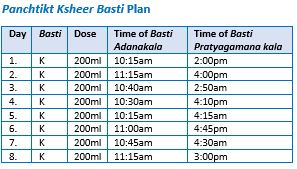Efficacy of Ayurvedic treatment in the management of Avascular Necrosis - A Case Study
Keywords:
Asthimajjagat Vata, Avascular Necrosis, Dashmoolasiddha Majja Basti.Abstract
Avascular necrosis (AVN) of the femoral head is a rare skeletal disease that typically manifests as hip joint or lower pelvic pain. Avascular necrosis of the femoral head is a condition in which there is limited collateral circulation and the blood supply to the head of the femur is disrupted, resulting in ischemic and subsequent necrosis. In India about 16000 peoples develops AVN of femoral head every year. In modern medicine treatment of AVN includes NSAID, bone grafting and replacement of hip joints. There is no specific conservative medicine in modern medical science for AVN yet. In Ayurveda all musculoskeletal diseases are considered under Vatavyadhi. Symptoms of AVN are similar to Lakshana of Asthimajjagata Vata described by Charak. The present case report is subjected to assess the efficacy of Ayurvedic protocol in the management of femoral head of AVN. A 35 years old male patient presented with Pain and stiffness at the left hip joint. Limited range of motion of the effected joint for 2 years. After reviewing all investigations including MRI, this case was diagnosed as left sided grade AVN of the femoral head. The patient was administrated with Panchatiktaksheer Basti (200ml) for 8 days then Dashmoolasiddha Majja Basti (100ml) for 21 days. The follow-up was done for 1 month. After therapeutic intervention significant improvements were noticed such as reduction in VAS scale and improvement in movements of hip joints. The present case study documents that Shaman Aushadh along with Basti therapy can be effective in AVN and improve the quality of life of patient.
Downloads
References
sBailey & Loves, Short Practice of Surgery, 25th Ed., Part 5, Chapter 35, p. 515. 2022 Jan.
Lespasio MJ, Sodhi N, Mont MA. Osteonecrosis of the Hip: A Primer. Perm J. 2019;23 [PMC free article] [PubMed] [Ref list]
Matthews AH, Davis DD, Fish MJ, Stitson D. Avascular Necrosis. 2022 Jan. [Medline]. [Full Text].
Bose VC, Baruah BD. Resurfacing arthroplasty of the hip for avascular necrosis of the femoral head: a minimum follow-up of four years. J Bone Joint Surg Br. 2010 Jul. 92(7):922-8. [Medline]
Acharya YT, editor, Shri Chakrapanidatta, commentator, Agnivesha, Charaka Samhita, Chikitsasthana; Vatavyadhichikitsa Adhyaya, 28/33, Chaukhamba Surbharti Prakashan, Varanasi, 2014; page 617.
H Raalston Stuart, D Penmenlan, Strachan Mark WJ and P Hobson Richard, Davidson’s principle of medicine, 23rd edition 2018, ch.34, page1343.















